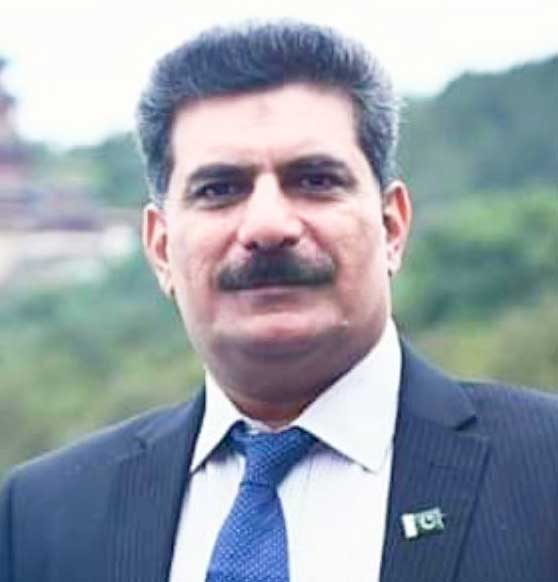Here arises a question: what was the need for introducing such policies that contrasted with the ideological foundations of the USSR? The socio-temporal and contextual analysis of the situation is required before inquiring into the subject matter. After the establishment of Soviet Union, though Lenin’s New Economic Policy (NEP) provided some relief and created a space for the private markets, inauguration of Joseph Stalin as a secretary general proved havoc for the already deteriorated economy. The centralized control on the economic, political, and social affairs, followed by the invasions on the neighbouring states stretched the economic capacity of the USSR.
The participation in World War 2 and dissatisfaction with the western powers further isolated the Soviet’s economy. Although de-Stalinization provided some space for the growth, Brezhnev’s economic and strategic policies gave rise to the economic stagnation in the USSR. Overall, the last six decades witnessed lack of innovation in the non-military sectors, low efficiency and productivity, insufficient agricultural production, and the priority of the military-industrial complex. Brezhnev’s Kosygin reforms not only created a “crisis of performance”, but also pushed Soviet Union into an “era of stagnation”. On the other side, Soviet’s aging leadership, ineffective bureaucracy (nomenklatura), the Soviet invasion of Afghanistan (1979-1989), strategic competition with the United States, legitimacy crisis in the Eastern Europe, and diplomatic isolation led Michael Gorbachev to introduce new reforms.
Glasnost (Openness) was introduced by Gorbachev in mid-1980 as a part of his reform agenda. It was aimed at redirecting the Soviet Union’s trajectory to curb the stagnation crisis. While the term had been historically existed in Russia, as prominent from its use in the Tsar’s era in the legal proceedings with the aim of maintaining transparency, Gorbachev’s reintroduced it in the political context to ensure the political transparency, freedom of expression, and civic responsibility, but within a socialist framework. As said by Gorbachev in 27th party conference, in February 1986, “We need Glasnost to stimulate criticism and self-criticism, to enhance the role of people in running the country”. It was not just a freedom of speech, but a tool of rejuvenation in the political context, enabling Perestroika (economic restructuring in the Soviet Union) on one hand, and correcting authoritarian benchmarks on the other. The increase of accountability for the government officials and social participation of people in the decision making were also the aim of this doctrine. As said by Gorbachev, “Without Glasnost, there is and cannot be any democratism or political creativity, or self-creativity of the masses”.
In 1988, at 19th Party Congress, he advocated for multi-candidate elections, a new Congress of People’s Deputies, public access to the documents upraising Stalin’s crimes, and free press. It was something unusual at such a huge scale, particularly after then Lenin’s death.
Furthermore, when it comes to identifying the core themes of the Glasnost, it can be divided into four. The first subject it addressed was that of freedom. This liberty was spanning from the individual freedom and the freedom of press. The decades old censorship on the newspapers was relaxed. The previously banned books were reintroduced. The prominent among these was “Gulag Archipelago by Solzhenitsyn”. The critical work of Bulgakov and Pasternak were also restored. Discussion on the sensitive topics such as Stalinism, the great purge, Soviet-Afghan war, and corruption was also started.
The second core theme was the restoration of democratic practices and the pluralism in the political sphere. Previously banned public associations, environment and peace movements, and trade unions were restored with the immediate effects. This doctrine further led to multi-party elections in 1889. It was a first step towards electoral reforms in Russia. The third major theme was the public scrutiny of the Soviet government officials. In this realm, open debates on the national and international policies, and the governance related issues were held at the parliament. The forth important theme was rewriting the Soviet history. For the first time, the condemnation of the brutal policies and the reign of terror by the Stalin was announced officially.
It led to the rise of nationalist movements across Baltic, Ukraine, and Caucasus. These movements cannot be analysed in isolation. Infect, the changing Cold War dynamics, Gorbachev’s reforms, INF and START treaties, leadership style, and deteriorating economic condition of the Soviet Union overall impacted the rise of historically suppressed nationalist moments in the Soviet Republics, particularly in Baltic, Ukraine, and Caucasus region. Moreover, Glasnost underscored the Soviet claims of volunteer incorporation of these regions in the Soviet Union.
The Baltic region, which consists of Lithuania, Latvia, and Estonia, was an independent region until 1940 when it was annexed by Stalin under the so called Molotov-Ribbentrop Pact of 1939. This forceful annexation amidst World War-II was never recognized by the Western States and lately the matter was highlighted in the United Nations too. Before the brutal annexation, all three states had a long history of separate cultures, traditions, national languages, norms, values, and histories. Even under the Soviet Union, the shadow resistance movements were continued particularly in Lithuania (e.g., the Forest Brothers). The emergence of Glasnost was a pivot point as it triggered the national awakening. With wide discussions on historical tragedies committed by the former Soviet rulers, forceful suppression, and violence, a sense of unity rose among the people and the desire to get independence rose to peak in the late 1990s.
Estonia became the first state in the Baltic region to claim independence in 1987 which was followed by the creation of Estonian Popular Front in 1988. Moreover, the Baltic Way, happened on 23 August, 1989 was one of the most iconic incidents. Around 2 million people across Baltic region marched in a human chain, remembering the harsh anniversary of Molotov-Ribbentrop Pact. The Institutional movement that started with the announcement of Glasnost and Perestroika resulted in the formal independence of Estonia in 1990, followed by the Latvia and Estonia (May 1991). Gorbachev, despite his liberal stance, initially opposed the independence and tried to use military muscles to crush these revolutions. However, weak economic, domestic division, international pressure, and mass protests led him to accept the changing regional realities.
Notably, in some places (i.e. Lithuania) Soviet troops intervened and resulted in the civilian deaths (Vilnius). But, overall the situation favoured the independence and so was accepted by the Soviet Union. All of these three states got international recognition within few months, even before the dissolution of the Soviet Union.
On the other hand, nationalist movements rose in Ukraine. Historically, it had been a part of different empires. For instance, Western Ukraine was a part of the polish and Austro-Hungarian Empire until 20th century and the Eastern Ukraine was one the most important region under the Tsar regime, submerged in Russian Empire as early as in 9th century after the Vikings and Mongolian attacks. An independent Ukraine, named as Ukrainian People Republic was also established from 1917 to 1921. However, it was integrated into the Soviet Union, making it one of the founding members of the Soviet Union.
Under Glasnost policy, researchers, scholars, and activists raised voices against Holodomor famine (1932-1933) and mismanagement of Chernobyl disaster (1986). Both events claimed the lives of millions. As a result of dissatisfaction, the Rukh (the People’s movement of Ukraine) was established in 1989. It advocated for the autonomy and the independence of Ukraine. In 1990, the Ukrainian parliament issues a declaration in the favour of State Sovereignty. After the failed coup in Moscow (1991), Ukraine officially declared independence. A plebiscite in the same year also verified that more than 90% Ukrainians want independence.
The Caucasus region, Armenia, Azerbaijan, and Georgia, also had the similar conditions like that of Baltic States. With unique history, language, traditions, and identity, these states were forcefully annexed under the Russian Empire in the 19th century. Though brief independence existence of these states was witnessed from 1918 to 1921, Lenin incorporated these under the Soviet Union.
However, there was no unity in the nationalist movements. For instance, the independence movement in Georgia was led by Zviar Gamsakhurdia. Due to massive popular support, ethnic primary and uniqueness of the Georgians, and vast rallies in Tbilisi (1989), Georgia became a separate state in 1991. Armenia on the other hand, was more concerned about Nagorno-Karabakh, a region with majority of ethnic Armenians. In 1988, mass protests erupted demanding the transfer of this region to Armenia. In Azerbaijan, the mass protests erupted over the status of Nagorno-Karabakh due to its geographic position and were suppressed by the Soviet Union, infamously known as Black Friday of January 1990 with 100 civilian casualties. Though both states gain independence in 1991, the issue still remains between the both.
Overall, it had negative consequences for Russia. For instance, Kaliningrad, the main hub of the Russia’s Baltic fleet lost the direct territorial connection with mainland Russia. The expansion of NATO, as said by George F. Kenan, the main proponent of the Cold War, increased the insecurities of Russia, leading it to attack Georgia (2008), Crimean (2014), and Ukraine (2022). Also these regions were of geopolitical and geo-economics significance due to their vast natural resources and losing them severely affected the Russia economy.
Overall, it changed the historical discourse of the Soviet Union, with both positive and negative impacts. At domestic level, individuals started expressing themselves publicly. Dissatisfaction with the governance, poor living conditions, unnecessary censorship, and ethnic representation were the subjects of the public debate. Additionally, the rise of separatist movements was also witnessed during this period. Glasnost exposed the deception and dissatisfaction with the communist party and the weaknesses of Marxists-Leninist ideas. Moreover, when this communist utopia ended, the people were full of social anxiety due to hidden realities which exposed on them. For instance, the details about death counts due to great famine of Holodomor were made public for the first time. Apart from that, proactive civil society, academicians, and other educated community used academic means to pressurise the government for reforms.
Furthermore, these domestic shockwaves created a negative spill over effect in the Eastern Europe. Inspired from the internal reforms in the Soviet Union, people in Poland, Hungary, and East Germany stood up for their rights. Mass protests and civil unrest deteriorated the Soviet grip on its so called sphere of influence. The most important thing in this regard was the Sinatra Doctrine. Presented by Gorbachev in 1989, it allowed the former Warsaw states to adopt the political system of their own choice. It gradually led to the fall of communism in Eastern Europe and in Churchill’s term, “Iron Curtain” was broken.
Pro-democracy revolution in Eastern Germany led to the fall of Berlin Wall, and velvet revolution changed the socio-political discourse of Czechoslovakia. Gorbachev, unlike previous policy of intervention under Brezhnev Doctrine, avoided crushing down revolutions across the region. At international level, the Gorbachev reforms fostered the trust building measures, INF treaty, and other negotiations with the United States. It peacefully ended the Cold War between the United States and the Soviet Union, saving the lives the millions that could have been devastated otherwise due to Mutually Assured Destruction (MAD). As a result for these events, communist parties across the world either reformed or dismantled, ultimately weakening the Karl Marx’s ideology. The universal norms remerged based on the common principles such as human rights, freedom of expression and political choice, something previously been imbedded in the Western States. In terms of academics, all the major theories of International Relations failed to predict the end of Cold War, giving rise to the Constructivism.





